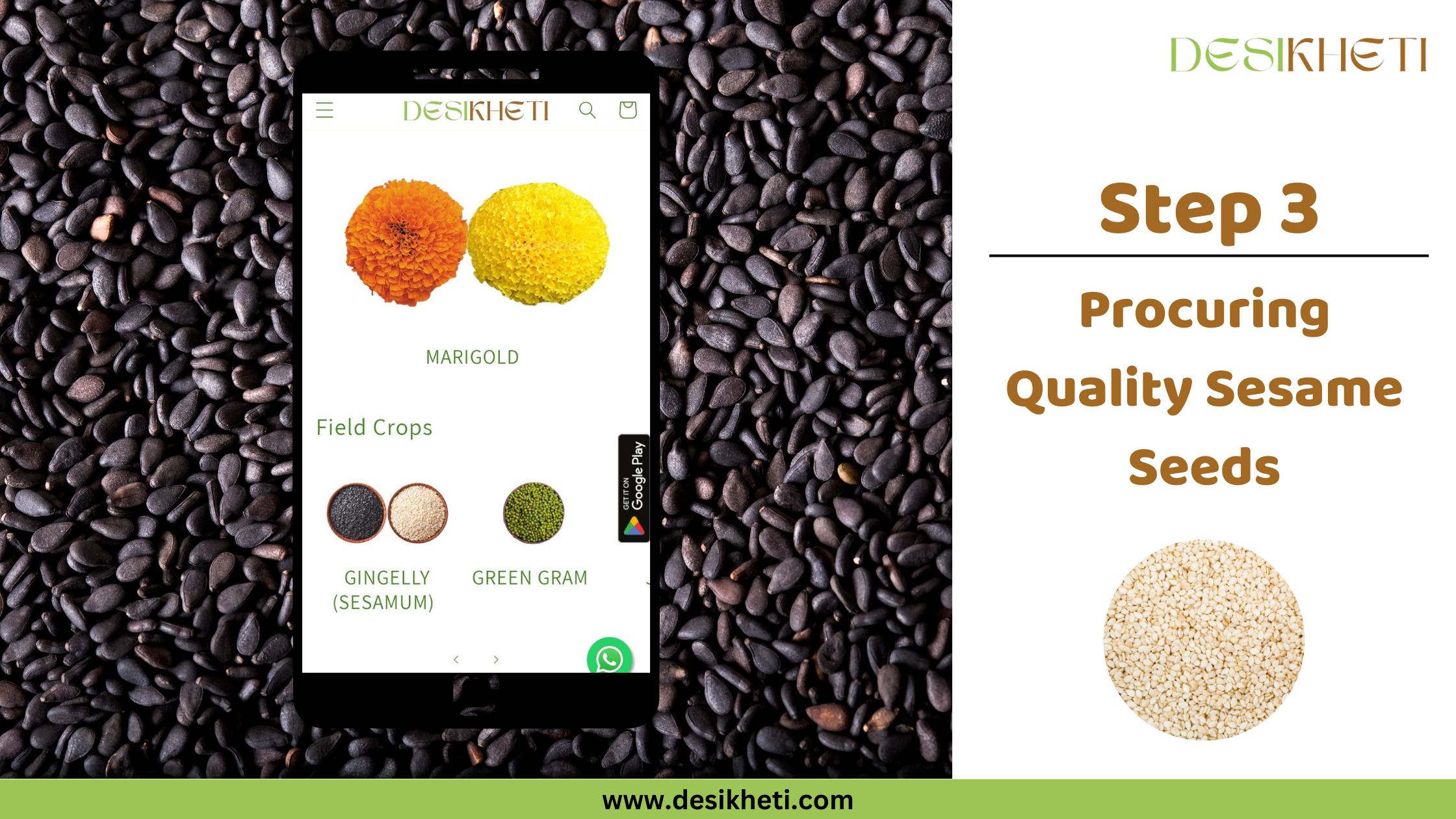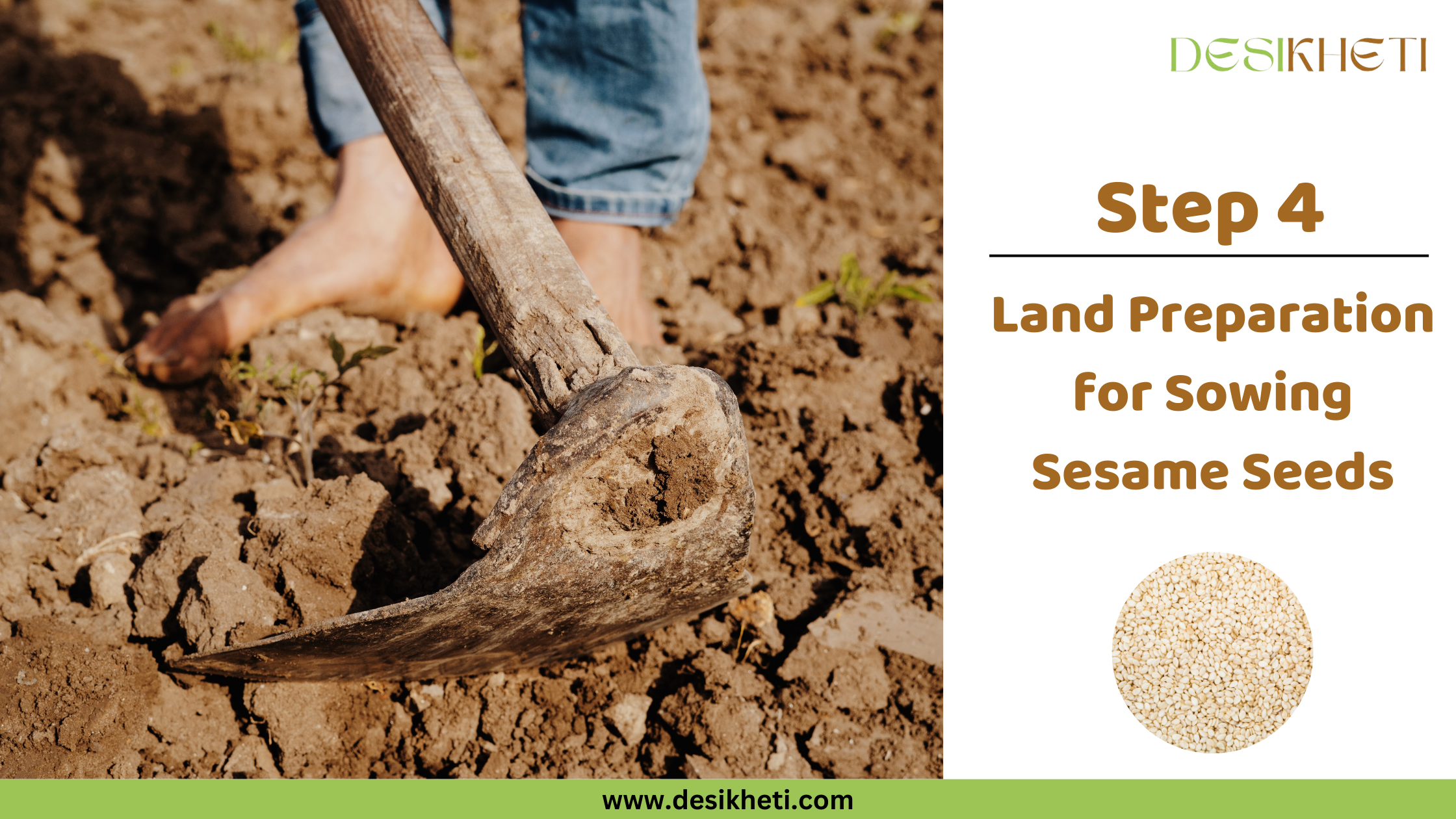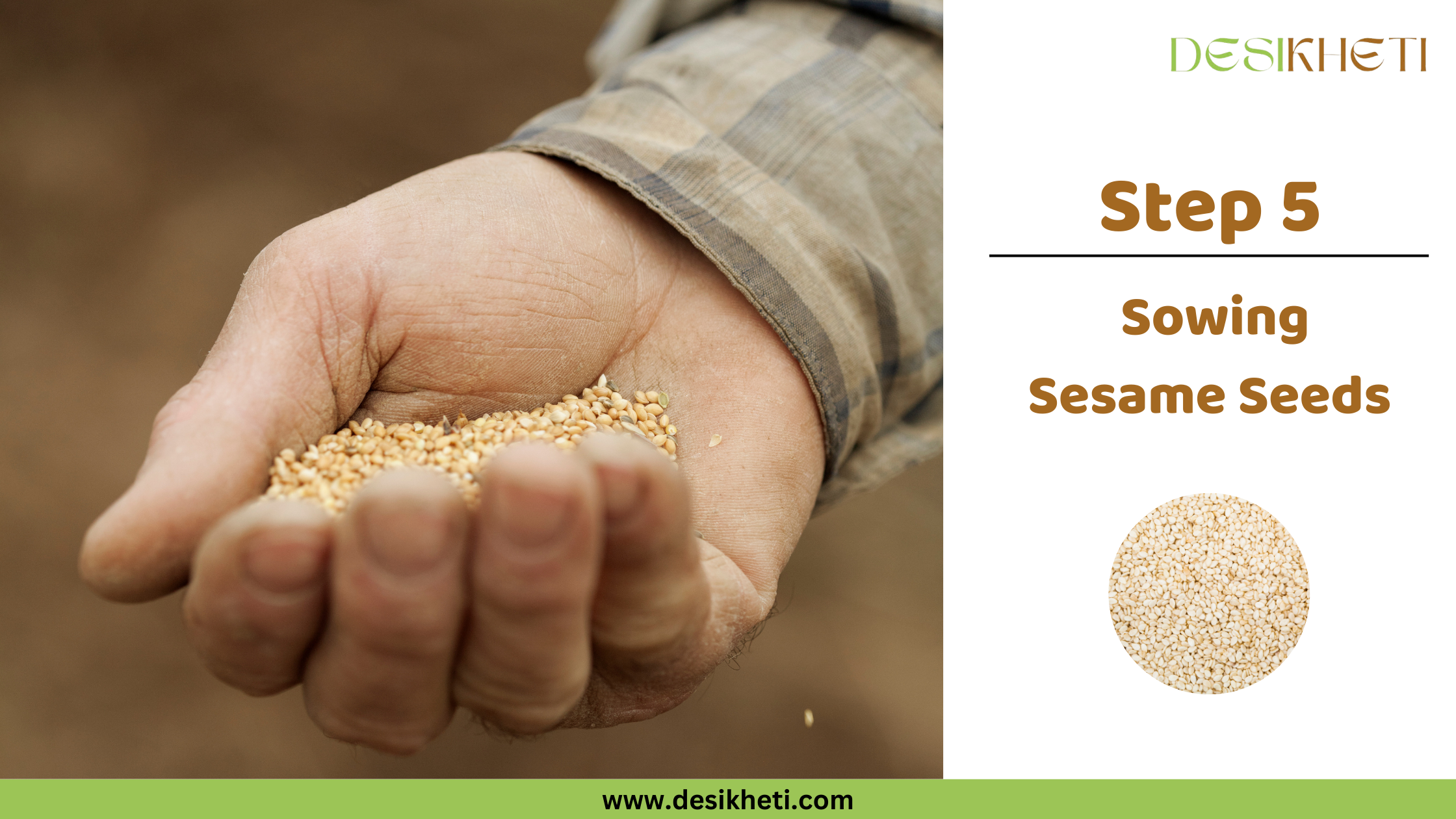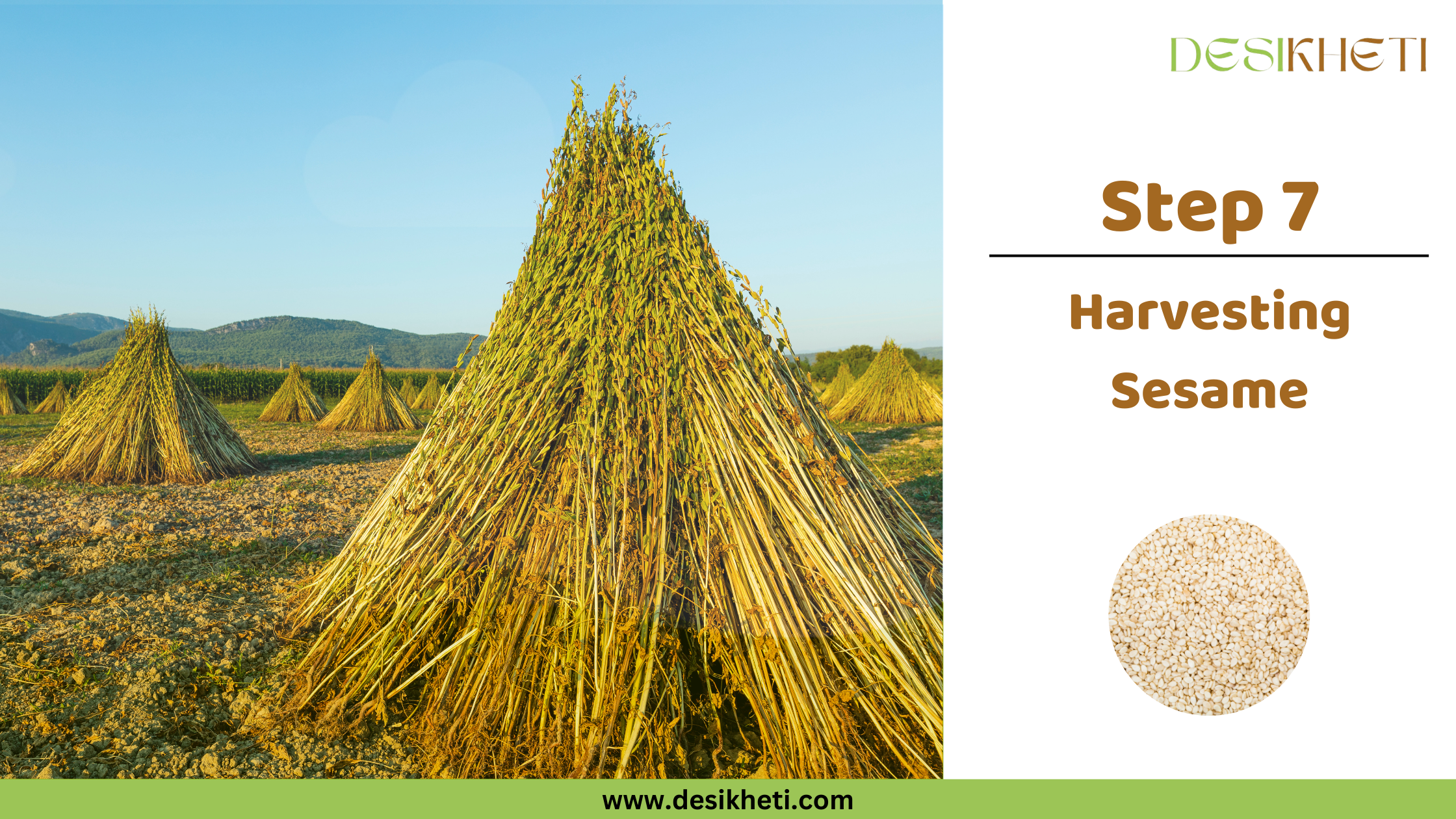Table of Contents
Introduction
Sesame (Sesamum indicum) is one of the oldest cultivated crops in the world, prized for its tiny seeds that are rich in oil and nutrients. Its seeds are used for oil extraction and are also consumed in raw or roasted form. With high demand in the food and oil industries, sesame farming presents a profitable opportunity. But where do you begin? Let’s break it down into seven simple steps for successful sesame cultivation. This step-by-step guide will walk you through the essential stages of sowing sesame seeds.

Step 1: Climate, Soil, and Season for Sowing Sesame Seeds

Climate for Sesame Cultivation
Sesame is grown in tropical and subtropical regions. It can also thrive in arid and semi-arid climates. For optimal growth, sesame requires warm temperatures ranging from 25°C to 27°C. Growth slows significantly when temperatures drop to 10°C, which can seriously affect pollination due to the reduced number of capsules. Sesame is a short-day plant, and high light intensity increases the number of capsules per plant.
Soil for Sesame Cultivation
Sesame grows best in well-drained, light loamy soils with a neutral to slightly acidic pH. Proper drainage is essential, as sesame is highly sensitive to waterlogging. Very sandy, saline, or alkaline soils are not suitable for sesame cultivation.
Season for Sesame Cultivation
Sesame is grown in different seasons across India, mainly as a Kharif crop (June–July) in areas with monsoon rainfall. In some regions, it is also cultivated during the Rabi season (September–October) or as a summer crop (February–March), depending on local climate conditions. Timely sowing is crucial to ensure healthy growth and better yields.
Step 2: Selecting the Right Sesame Variety

Several factors such as region, season, climate, and disease tolerance play a key role in selecting the right sesame variety. For your convenience, some commonly grown sesame varieties are listed below.
Step 3: Procuring Quality Sesame Seeds

For successful sesame farming, selecting high-quality seeds is essential. Even with the best cultivation practices, using poor-quality seeds can result in low yields and weak plant health. Looking for the best sesame seeds? DesiKheti offers a wide range of premium sesame seeds tailored to your farming needs. Browse our collection, place your order online, and enjoy fast, reliable delivery right to your doorstep.
Step 4: Land Preparation for Sowing Sesame Seeds

Plough the field 2 to 3 times, followed by harrowing to obtain a fine tilth. Then, level the field properly to prevent waterlogging. During the final ploughing, apply 10 to 12 tonnes of FYM (Farmyard Manure) per hectare to enrich the soil.

Step 5: Sowing Sesame Seeds

Seed Rate : The average seed rate is generally 1 kg of sesame seeds per acre of land. However, the exact seed rate may vary based on factors such as the method of sowing, spacing, etc.
Seed Treatment : Seeds sold by private companies are usually pre-treated with chemicals. However, if the seeds are not pre-treated, treat them with Thiram at 3 g per kg of sesame seeds.
The most common method for sowing sesame is broadcasting. Seeds are mixed with sand in an equal ratio (or up to three times) to ensure uniform distribution. After sowing, the seeds need to be covered with soil to ensure proper contact, which can be achieved through light ploughing, using a cultivator, or a harrow.
For better yields, line sowing is preferred, as it promotes better germination, uniform plant spacing, and easier intercultural operations. Seeds are sown at an optimal depth of 2–3 cm.
Spacing depends on various factors such as the sowing method, regional practices, etc. In Andhra Pradesh, a spacing of 30 x 10 cm is commonly followed. However, a wider spacing of 45 x 15 cm may also be adopted depending on local conditions.
Step 6: Care After Sowing Sesame Seeds

Water Management:
Sesame is capable of withstanding a high degree of water stress. It generally requires 300–350 mm of water for optimal growth. In the Kharif season, it is mainly grown as a rainfed crop. For Rabi or summer sesame, pre-sowing irrigation is necessary to ensure proper seed germination and adequate crop establishment.
Depending on soil type, weather conditions, and crop duration, irrigation can be provided once every 12 to 15 days. The flower initiation and capsule-filling stages are the most sensitive to water stress, so sufficient irrigation during this period is crucial. The crop is usually irrigated using the check basin method.
Weed Management
Sesame is sensitive to weed competition, especially during the first 15–25 days after sowing. To manage weeds effectively, two intercultivations, one at 15 days after sowing and another at 35 days after sowing followed by one round of hand weeding, can be done to keep the field weed-free.
Step 7: Harvesting Sesame

Sesame crops take 80–150 days to mature, depending on the variety. Harvesting is done when the leaves, stems, and capsules begin to turn yellow, and the lower leaves start shedding. To prevent seed shedding, avoid letting the crop become overripe in the field.
The mature plants are cut at ground level and then stacked in the sun for about a week, with the cut ends facing upwards, allowing proper drying before threshing.

Common FAQs Related to Sesame Seed Sowing
Q. What climate is best for growing sesame?
A. Sesame grows best in tropical and subtropical climates. It requires warm temperatures ranging from 25°C to 27°C. It can also tolerate arid and semi-arid conditions but is sensitive to frost.
Q. Which soil is best for growing sesame?
A. Sesame thrives in well-drained, light loamy soils with a neutral to slightly acidic pH. The soil should be free from waterlogging, as sesame is highly sensitive to excess moisture.
Q. When can sesame be harvested?
A. Sesame is typically harvested 80–150 days after sowing, depending on the variety. It is ready to harvest when the leaves, stems, and capsules turn yellow, and the lower leaves begin shedding.
Q. How deep can sesame be sown?
A. Sesame seeds can be sown at a depth of 2–3 cm.
Q. What is the scientific name of sesame?
A. The scientific name of sesame is Sesamum indicum.

Join DesiKheti Whatsapp Channel for regular updates, farming tips, and information on agriculture.
